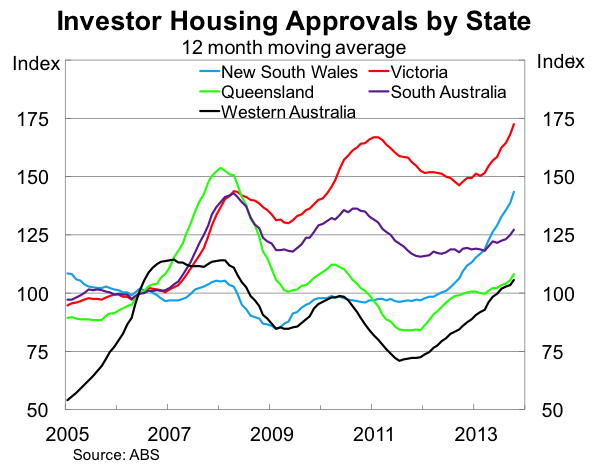Sydney's inevitable house price decline
The recent pick-up in Sydney house prices is a product of investor speculation, though investors continue to support activity in a number of other states. Investor activity is at an unprecedented level in Sydney. When this inevitably normalises, Sydney house prices will decline.
Housing market activity has picked up significantly since the Reserve Bank began its latest cutting cycle. Owner-occupiers are taking the opportunity to upgrade on their existing purchases, while investors believe there are opportunities to make a quick buck.
But for first home buyers, it has been an entirely different story: their activity has never been weaker.
The growing divide between investors and first home buyers should be of increasing concern for policymakers and, indeed, investors themselves. Eventually the market will run out of owner-occupiers looking to upgrade or downgrade, which will leave investors simply speculating among themselves.
Sydneysiders will find, as they did in 2004, that this process is unsustainable. Following that episode, real house prices meandered along largely unchanged for the best part of a decade, following an investor-fuelled boom that faltered at the end of 2003.
Even to this day (and despite the recent boom), Sydney's real house prices are effectively unchanged since December 2003. It is a sobering reminder that house prices do not always go up and that there can be prolonged periods where price growth is weak or negligible.
On Friday, the Australian Bureau of Statistics released investor data that emphasised the growing divide between investors and first home buyers.
Investor home approvals have increased in all states during 2013, but the rise is most notable in New South Wales. Investor approvals in the state are up by over 30 per cent annually and, as the graph below shows, they are significantly above normal levels.
By comparison, approvals in Queensland and South Australia have increased only modestly.

But that is only one part of the story. The investor-to-FHB ratio – which measures the ratio between the value of loan approvals for both investors and first home buyers – has increased to an unprecedented level in New South Wales.

More importantly, it is completely out of whack with the rest of the country. Investors have been active in the other states but to nowhere near the same extent. Investor growth in Queensland and South Australia has been fairly weak, surprisingly so given the level of interest rates offered to investors.
I should note the investors are not inherently bad. The market needs investors to support affordable rental opportunities and boost the housing stock. However, investors are also the most volatile category of housing loans: they tend to get a little ahead of themselves during the good times and, when the situation sours, they leave in droves.
In short, investors can create more volatility in house price fluctuations and that often isn’t a good thing. Given housing is over 60 per cent of household wealth, changes in house prices can have a significant effect on economic activity.
It is clear that investors are driving Sydney house prices, but the situation is less clear in the other states. Investors appear to be mainly supporting moderate growth in Melbourne and Perth and preventing prices from falling in Brisbane and Adelaide.
It certainly does not surprise me that the two mainland states with the slowest investor growth, Queensland and South Australia, have had only modest house price growth in 2013.
So what will happen now?
We are not often certain about anything in the housing market, but we can all agree that the recent rise in investor activity in New South Wales is not sustainable. Investor activity in Sydney will inevitably slow and, when it does, it will happen quickly.
As a result, Sydney house price growth will slow significantly and more than likely begin to decline once investor activity normalises. It wouldn’t surprise me if Sydney saw something similar to when the first home owner boost was removed in 2009 and house prices gradually declined over the following two years.
For the other states, it is less clear. Investors may begin to move their attention towards other states and that could support house price growth. However, I see a period of soft growth in these states, particularly given the weakness in first home buyer activity. Outside NSW, I expect house price growth to be at around the same pace as income growth over the next couple of years.













